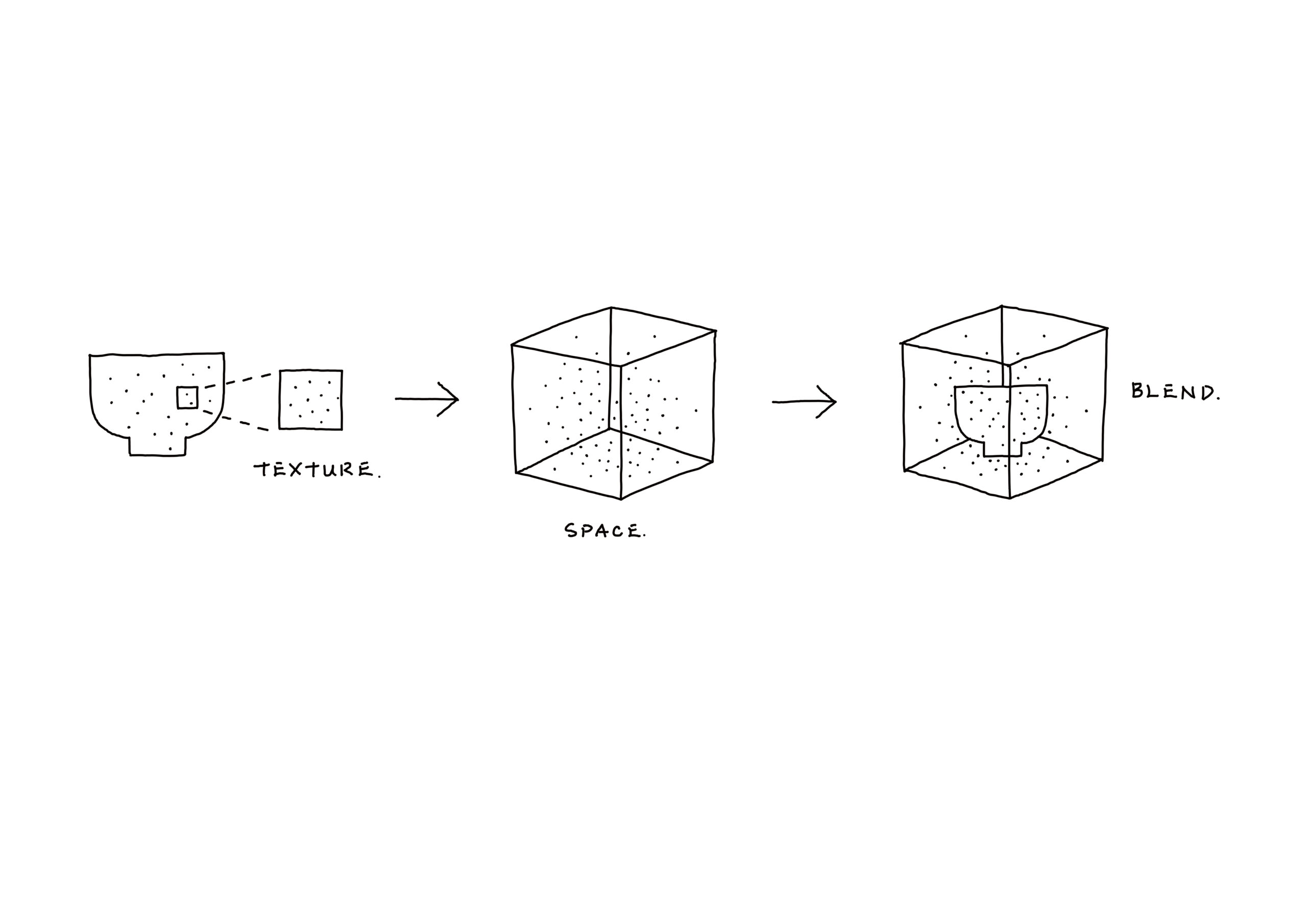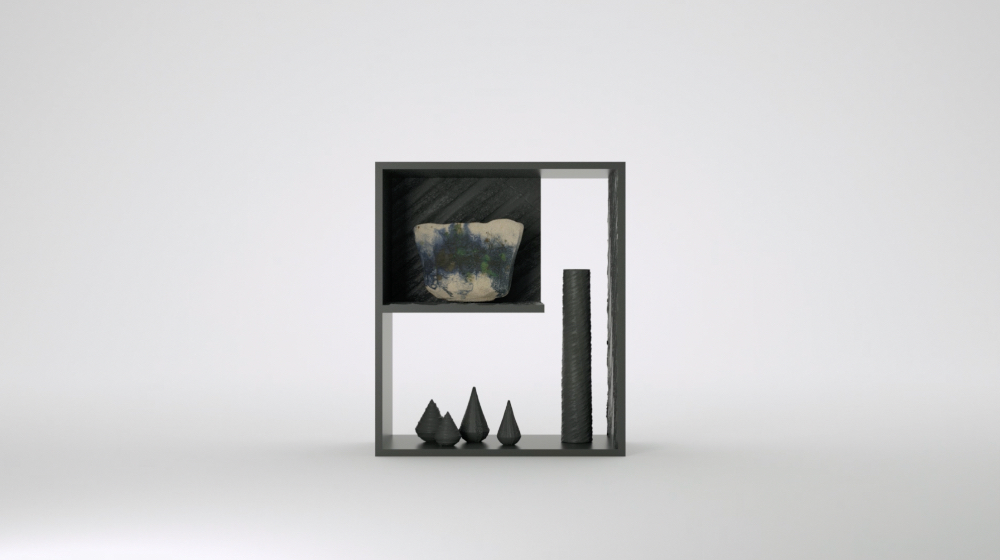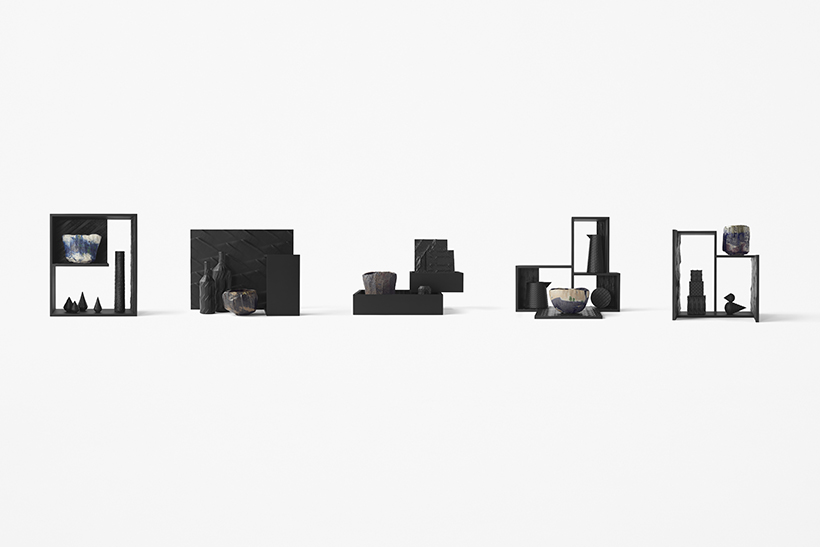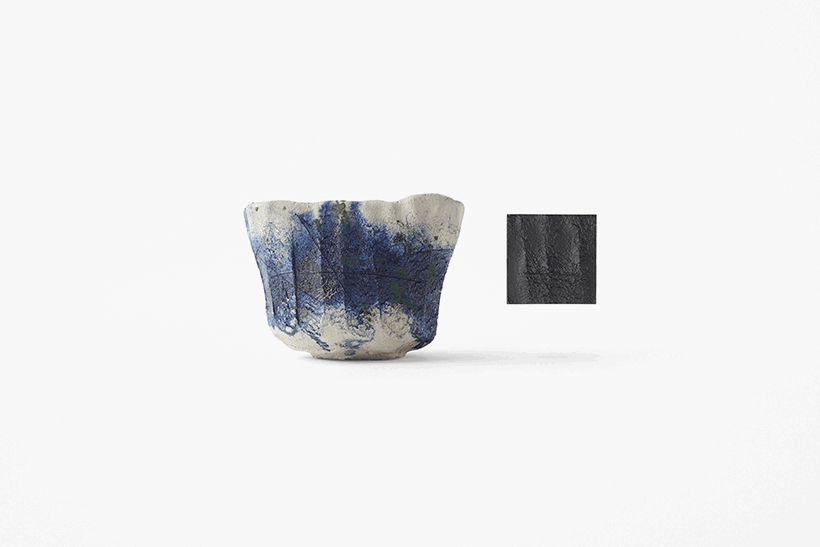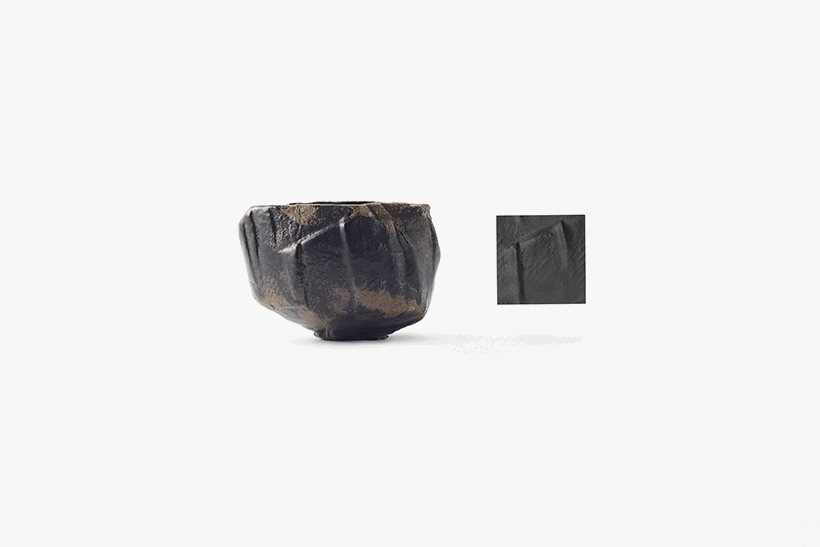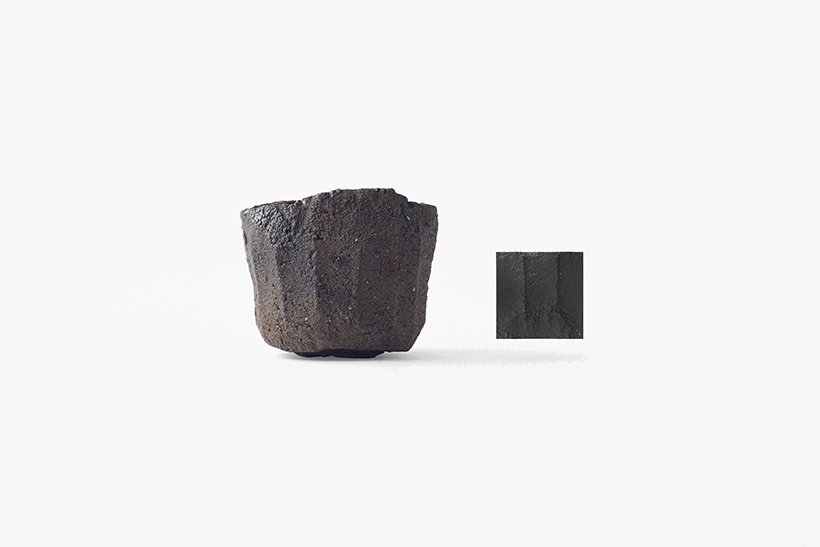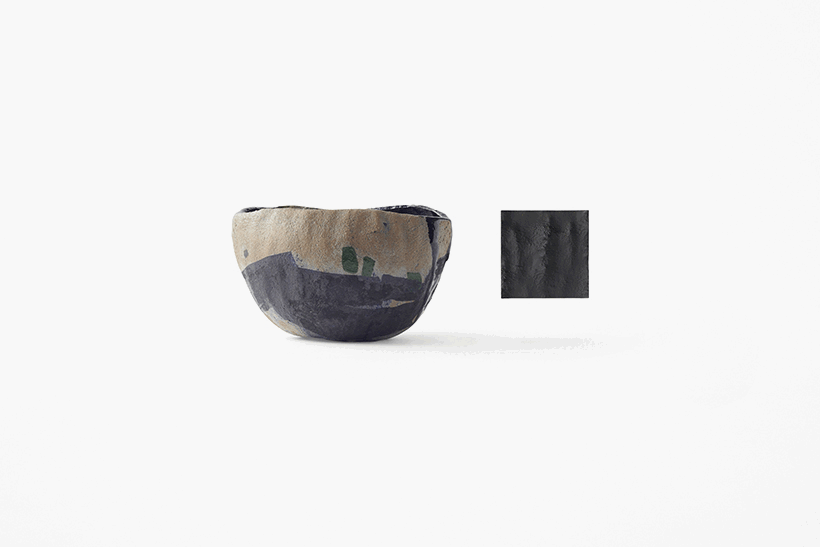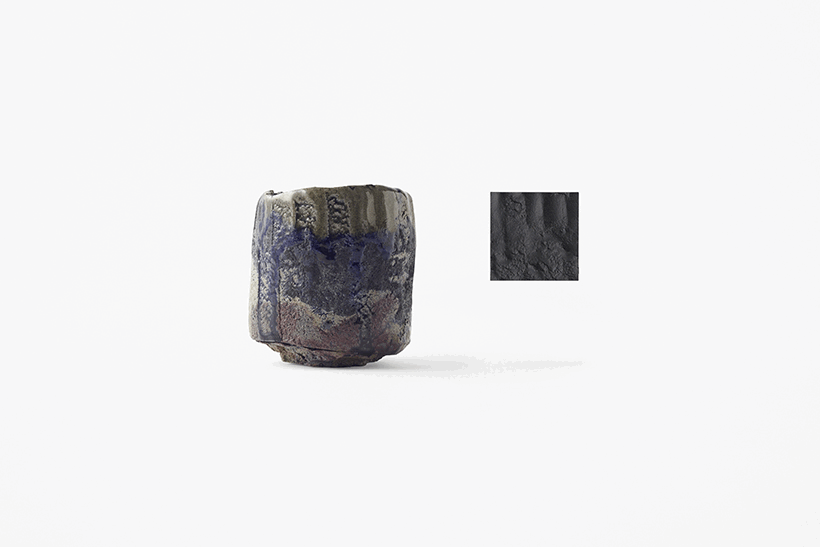jihada
This installation was born from a suggestion from Raku Jikinyu, that the tea bowls might be exhibited not on stands, but as they integrate into daily life.
First, furniture pieces like bookshelves, drawers, doors, and windows as well as objects like dinnerware, picture frames, bottles, cans, books, and clocks were chosen. The objects were distilled to their forms and finished in a matte black to avoid any association with any specific, real lifestyle. These parts were assembled to create an “interior space in a minimum unit” in which the tea bowl is inserted. Out of a desire to express the tea bowl’s integration in its environment, a segment of the bowl’s surface texture was 3D scanned and “replanted” onto parts of the other objects. Winding waterways, rough mountainsides, the skin of a tree–by scaling the textures by 0.25x to 3x, the diversity of stories embedded in the tea bowl’s texture was accentuated. Ultimately, five different spaces were created and the textures used in each were taken from their respective tea bowls.
The resulting expression is as if the earthen skin (jihada) of the tea bowl has spread across its surrounding space, like moss or tree roots engulfing the environments they inhabit.
